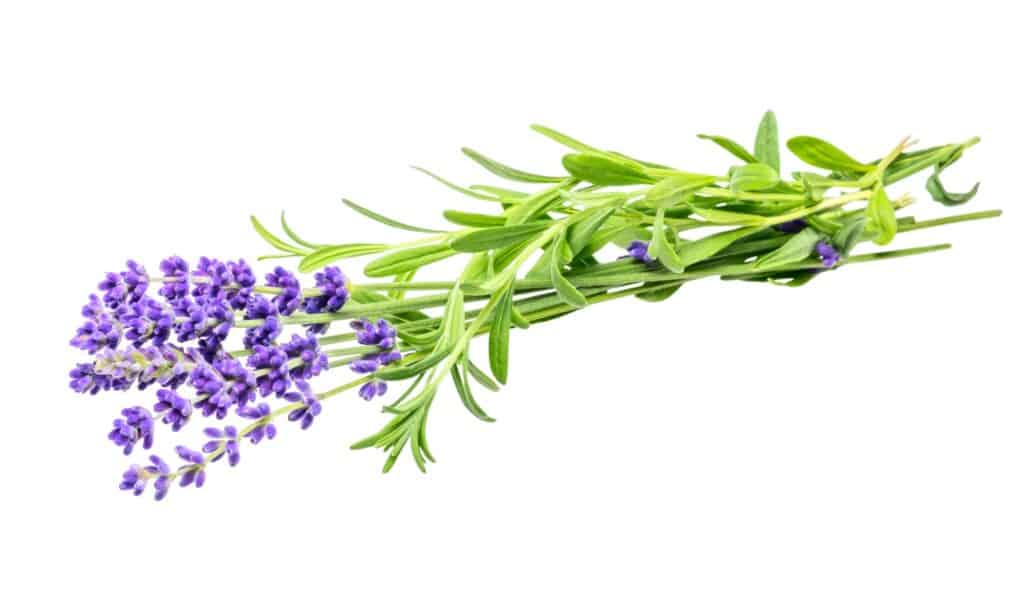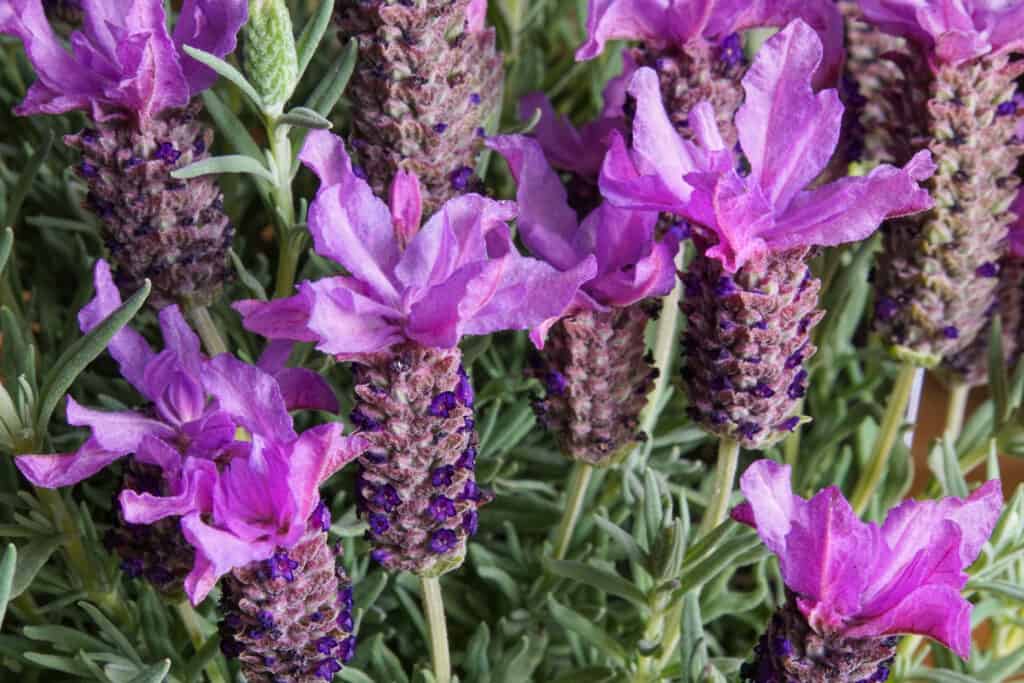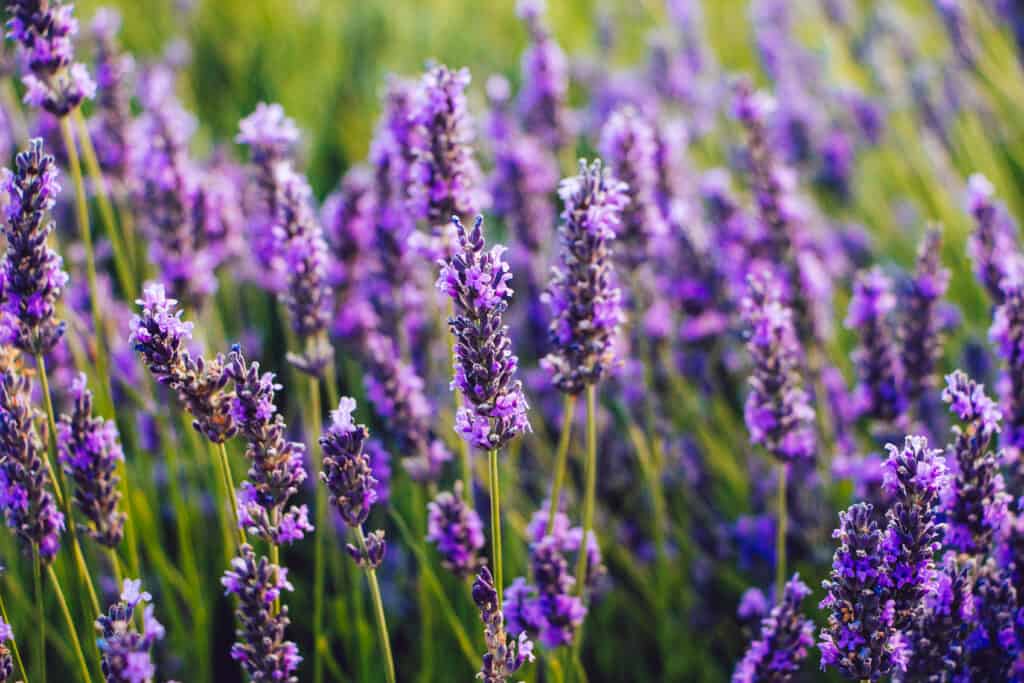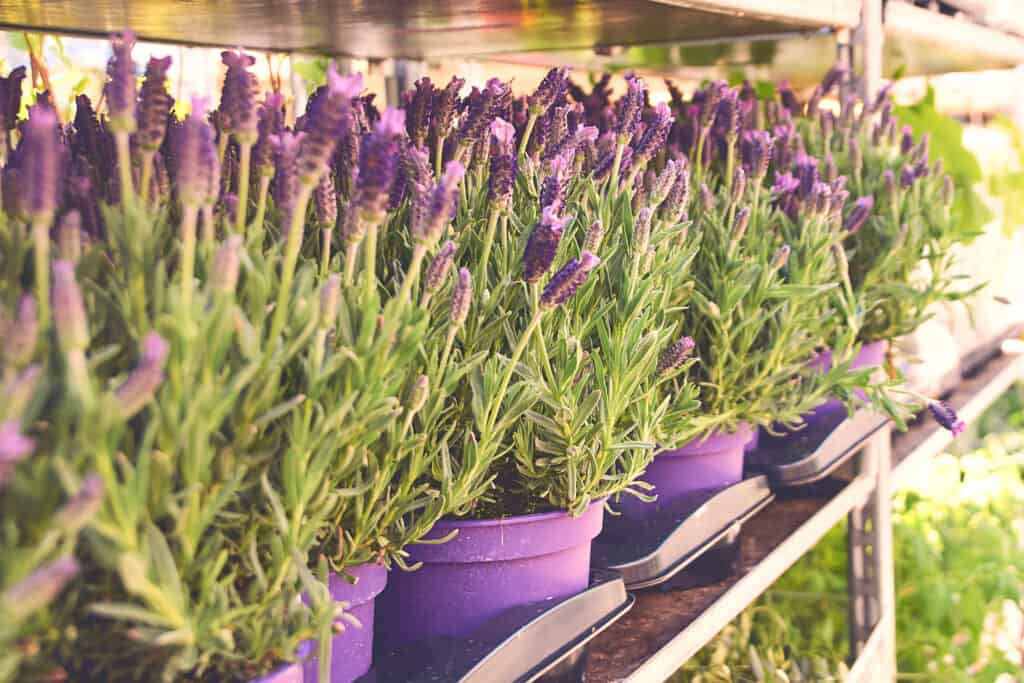Spanish and English lavender are stunning lavender plants that are often grown as ornamentals. Both are evergreen herbs known for their bright purple color and wonderful aroma. However, they look incredibly alike, making it difficult to tell them apart. But don’t worry, we’ll explore everything you need to know about French lavender vs. Spanish lavender!
Comparing English Lavender vs. Spanish Lavender

The
English lavender
smells more delicate than other lavender varieties.
©iStock.com/Olesia Bekh
| English Lavender | Spanish Lavender | |
|---|---|---|
| Species | Lavandula angustifolia | Lavandula stoechas |
| Alternative Names | True lavender, garden lavender, common lavender, narrow-leaved lavender | Topped lavender, French lavender (UK only) |
| Origin | Mediterranean | Spain, France, Portugal, Italy, Greece |
| Size | Height – 12 to 24 inches Width – 20 to 24 inches | Height – 12 to 18 inches Width – 18 to 24 inches |
| Flower Color | Light to dark purple | Pink to purple |
| Leaves | 1 – 2.5 inches, narrow, elongated, greyish-green | 0.4 – 1.4 inches, straight |
| Flower Appearance | Short, dense flowers, 1 – 3 inch flower spikes | Dense, cylindrical heads, upright petals |
| Bloom | Midsummer for approximately 4 weeks | Spring and early summer |
| Cold Tolerance | Zones 5 to 8 | Zones 7 to 9 |
The 4 Key Differences Between Spanish Lavender and English Lavender
The main difference between Spanish and English lavender is their size.
English lavender is taller than Spanish lavender and typically has longer leaves. Other differences between these two plants include the color and appearance of their flowers and how well they tolerate the cold.
Although Spanish and English lavender are often mistaken for each other because of their appearance, there can also be some confusion because of their names. Spanish lavender (Lavandula stoechas) goes by the name “French lavender” in the UK, yet outside of that country, it is called Spanish lavender. However, ironically, English lavender (Lavandula angustifolia) goes by the name “English” even though it is not actually native to the UK!
Spanish Lavender vs. English Lavender: Size

Spanish lavender is 12 to 18 inches tall and 18 to 24 inches wide.
©iStock.com/13threephotography
The first difference between these two types of lavender is their size. Although they have a similar width, English lavender reaches a slightly taller height than Spanish lavender. Spanish lavender is 12 to 18 inches tall and 18 to 24 inches wide. However, English lavender is 12 to 24 inches tall and 20 to 24 inches wide.
Spanish Lavender vs. English Lavender: Leaves

The English lavender has straight, elongated leaves that are usually 1 to 2.5 inches long.
©iStock.com/ASIFE
Another difference between these two plants is the size of their leaves. Although both plants are evergreen, Spanish lavender has smaller leaves than English lavender. Spanish lavender has greyish-green leaves which are straight, narrow, and typically 0.4 to 1.4 inches long. English lavender also has straight, elongated leaves. However, they are usually 1 to 2.5 inches long.
Spanish Lavender vs. English Lavender: Flowers

Spanish lavender
blooms in spring and early summer with pink to purple colored flowers
.
©iStock.com/Berezko
The most distinctive difference between Spanish and English lavender is the appearance of their flowers. Spanish lavender flowers are produced on the top of leafless stems. They appear as a dense, cylindrical flowerhead topped by large petals in a distinctive upright position. Spanish lavender blooms in spring and early summer with pink to purple colored flowers.
English lavender also produces flowers at the top of leafless stems, and develop on spikes approximately 1 to 3 inches long. However, the flowers of English lavender have much shorter and broader petals than those of Spanish lavender and bloom in a loose, open shape all the way up the spike. English lavender blooms during the midsummer with rich purple flowers, which can be either light or dark in color, although they only remain for around four weeks.
Spanish Lavender vs. English Lavender: Cold Tolerance

The English lavender is generally considered to be the hardiest of all the lavenders and can withstand cold, snow, and frost.
©iStock.com/OSINSKIH AGENCY
The final difference between English and Spanish lavender is their tolerance of the cold. It’s important to understand which lavender is most suited to your area as it can make the difference between you have a plant that can survive the winter and one that cannot. Although most lavenders come from Mediterranean regions and therefore are not theoretically suited to harsh weather, English lavender is actually quite tolerant of the cold. In fact, it is generally considered to be the hardiest of all of the lavenders and can withstand cold, snow, and frost. English lavender is best suited to zones 5 to 8, where it will typically thrive.
Spanish lavender is not as tolerant of the cold as English lavender and is suited to zones 7 and 9 as it thrives in dry, temperate regions. Anything colder than these zones puts the plant at serious risk of dying during the winter months.
Up Next
The photo featured at the top of this post is ©
Sources
- Clearview Horticultural, Available here: https://clearviewgardenshop.com/english-vs-spanish-lavender-how-to-choose-the-right-one-for-you
FAQs (Frequently Asked Questions)
Are Spanish and English lavender harmful to pets?
Yes, lavender plants contain the substance linalool which is toxic to animals such as cats and dogs. This means that both English and Spanish lavender is harmful to pets and can make them sick if they consume any part of the plant.
What are English and Spanish lavender used for?
The most distinctive thing about lavender plants is their wonderful scent, and this is why its oil has a wide range of uses. In some places it is used as an antiseptic to treat minor wounds, while in other places it is used for relaxation and help alleviate anxiety.
Are Spanish and English lavender easy to grow?
Yes! Lavender plants are some of the easiest plants to grow and are a perfect choice even if you aren’t particularly green-fingered yet. So long as you ensure you have the correct lavender plant for your growing zone then the best way to grow lavender is to ensure it is planted in well-drained soil and has access to plenty of sunlight. Then you can just sit back and enjoy the stunning blooms and the wonderful lavender scent!
Is lavender a perennial or an annual?
In most cases lavender is a perennial plant – particularly if it is in well-drained soil. This means that your lavender plant will keep growing back every year!
Thank you for reading! Have some feedback for us? Contact the AZ Animals editorial team.






